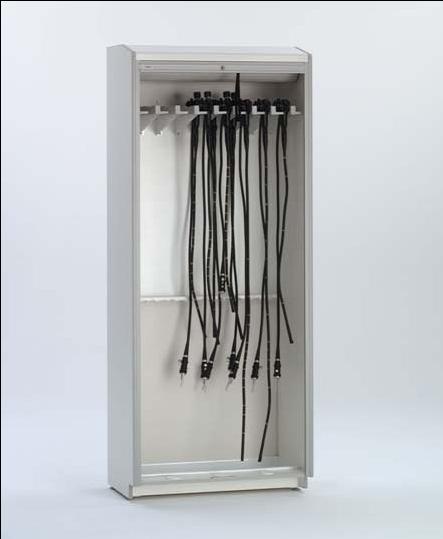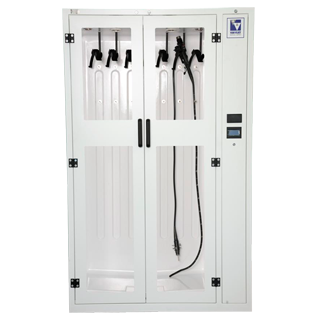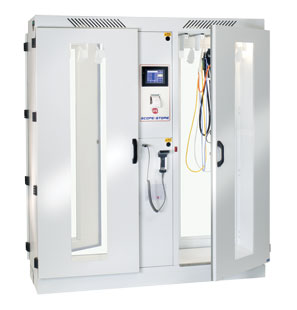Categories
Endoscope Storage Cabinets: High-Quality Drying, Conditioning and Storing

What is an endoscope storage cabinet? As the name suggests, this is a special unit that is designed for an organized storage as well as display of clean endoscopes. Such cabinets usually feature special soft-plastic brackets that secure the endoscope heads, and are made of materials that insure ease of cleaning.
The cabinets should have proper vents in order to keep all the devices dry. Some models circulate clean air with the help of a high-efficiency particulate-air filter. They exhaust the air back into the room via an activated carbon filter. After the tools are decontaminated and the removable parts are detached, an endoscope storage cabinet can keep them clean for the next procedure. Never store them in carrying cases.
Drying and Conditioning Processes
As a rule, the drying process takes up to two hours. It takes place passing dry air at a maximum pressure of about 0.5bars. The duration can be changed only after expert advice.
The conditioning process usually takes place by passing air through an endoscope right after the drying process. As an endoscope drying cabinet operates at the pressure that is slightly excess than the exterior one, the recontamination risks are reduced. A standard storage period is 1 week, though it can be changed. During this period no growth is observed. To prevent the growth of microorganisms dry an endoscope before storage.

Storage Recommendations
Storage for endoscopes revolves around three basic principles. They are:
- ownership
- infection control
- device safety
When the storage process is properly arranged, it provides a high level of scopes protection both from themselves and their environment. Cabinets and closets shouldn’t be regarded to as the same notions. Storage closets may be used only in some facilities, while cabinets are common.
Small rooms and closets usually limit the access to endoscopes. Storage cabinets limit compression damage from other supplies and equipment.
Here are some storage recommendations that should be taken into consideration:
- Uncoil insertion tubes.
- Proper drying should be ensured prior to storage.
- Avoid possible infection of already disinfected endoscopes by prolonged storage in a place that promotes pathogen growth or by contact with the environment.
- Hand them in a vertical position in order to facilitate the drying process.
- Place a disposable cover over endoscopes to protect them from contamination.
- Following the manufacturer’s instructions, remove valves, caps and all the detachable components.
- Mark the endoscopes that have been processed.
- Use a well-ventilated cabinet for reprocessed tools.

Keep in mind that new endoscope storage cabinets help to overcome all the possible risks of cross-contamination. Besides that they allow an immediate use of stored tools.
However, drying and storing are not the only options available. Endoscope storage cabinets also offer protecting scopes in order to prevent damage.



